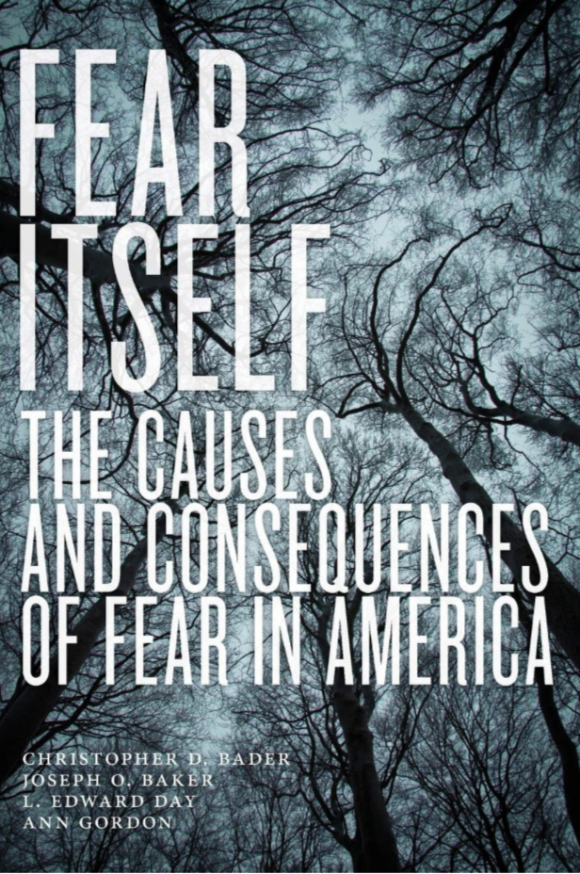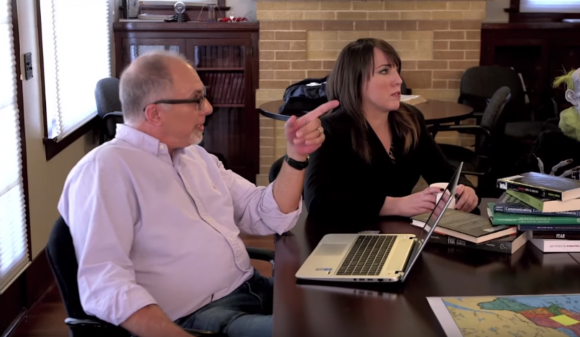An American Horror Story Renowned FEAR Survey is now a book.
March 20, 2020
 For the past six years, Wilkinson’s Babbie Center for Research has surveyed what keeps Americans awake at night. Now, their ongoing multi-year, empirical “Study of American Fears” is becoming a book.
For the past six years, Wilkinson’s Babbie Center for Research has surveyed what keeps Americans awake at night. Now, their ongoing multi-year, empirical “Study of American Fears” is becoming a book.
Fear Itself: The Cause and Consequences of Fear in America examines the prevalent role that fear plays in the lives of daily Americans. The fear that average Americans feel toward things like gun violence or natural disasters has real personal and social consequences, influencing the way we see the world and others.
Dr. Christopher Bader (Sociology), Dr. Ed Day (Sociology), and Dr. Ann Gordon (Political Science), head researchers at the Babbie Center and of the FEAR Survey, co-authored the book. They see their book as a way to bring the public into their ongoing conversation about fear.

(Left to right) Dr. Chris Bader (Sociology), Dr. Ann Gordon (Political Science), and Dr. Ed Day (Sociology) make up the FEAR team.
The book created a collaborative, interdisciplinary space that brought together scholars with a keen interest in different topics to shed light on a pervasive force in our daily lives. It is the culmination of over five years of research—five years of the human experience captured in a research study about fear. For the trio, it marks a significant step in understanding how society behaves or acts.
According to Day, “Fear itself has become as big a problem as the things we are afraid of, and this book is meant to be an antidote to the culture of fear that dominates modern life.”
“The goal was to write for a more general audience than we usually write to as academics. Trying to figure out how to tell our story in this way was a fun challenge for me,” said Bader.
Though they largely drew from the survey research study for the book, they also included additional fieldwork. Gordon, for instance, visited a “Doomsday Prepper” camp to observe their lifestyle. Bader and Day attended a UFO “conference” to speak with upholders of looming interstellar intervention.
“[The general public] can put the FEAR survey into a greater societal context by using the fieldwork that we did for the book to provide a much richer understanding of fear in America,” said Gordon.

Day and Bader
They all had different research interests that they initially brought to the project. For Bader, it was panics, or instances when society becomes increasingly anxious about a certain thing, like pandemics. Gordon was interested in the fear of natural and human-made disasters, as well as terrorism. Day had studied people’s fear of crime.
But in writing the book, they all worked together, passing it back-and-forth and getting a chance to dive into each other’s research interests. Each chapter delves into a certain topic and explores the fear that surrounds it. “We first mapped out what each chapter was going to be and they sort of fell into natural categories,” said Bader. “It was mainly a process of putting it up—writing a draft, passing it to one another, critiquing each other.”
“The best part about writing the book was being part of team FEAR and working with all of them,” said Gordon. “The most fun was reading what my co-authors wrote and thinking, ‘That’s really cool,” added Day.
Fear Itself: The Causes and Consequences of Fear in America is now out and available for purchase. Meanwhile, Bader, Day, and Gordon are continuing their FEAR survey at the Babbie Center. Click here to read about one of their recent FEAR studies on the 2020 elections written by one of their student researchers.


